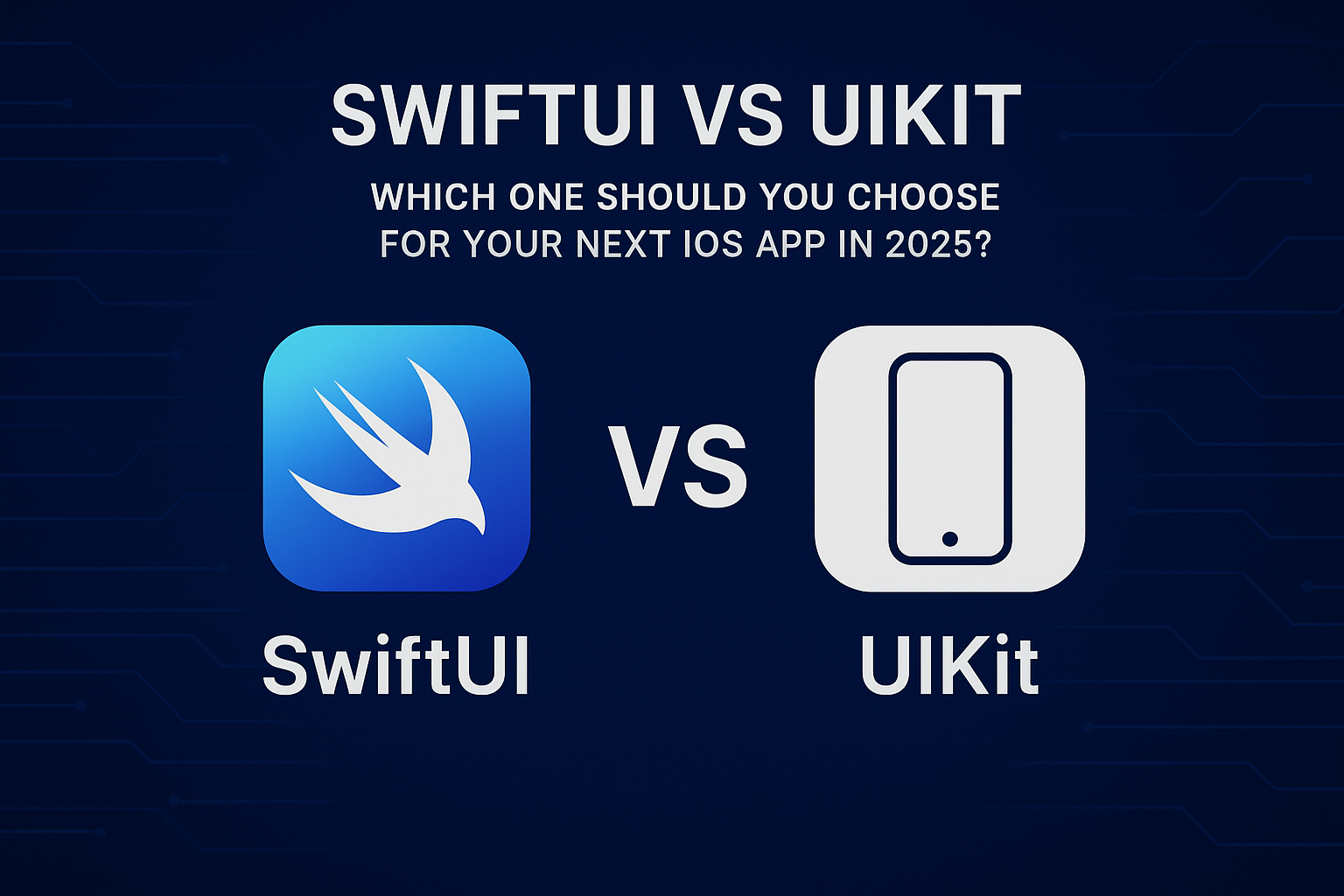SwiftUI vs UIKit: Which One Should You Choose for Your Next iOS App in 2025?
01 October 2025

Introduction
Apple introduced SwiftUI in 2019 as a modern, declarative framework for building user interfaces across iOS, iPadOS, macOS, watchOS, and tvOS. Since then, it has rapidly matured — and in 2025, it’s becoming the default choice for many developers.
But with UIKit still powering thousands of apps and offering unmatched flexibility, many businesses and developers face the same question:
👉 Should we use SwiftUI or UIKit for our next iOS app?
In this article, we’ll compare SwiftUI and UIKit, their strengths and weaknesses, and help you decide the right path for your project.
What is UIKit?
UIKit has been the backbone of iOS app development since the launch of the first iPhone. It uses an imperative programming model, meaning you write step-by-step instructions for how the UI should update.
Pros of UIKit:
- Mature, stable, and battle-tested
- Huge library of third-party resources & community support
- Fine-grained control over UI elements
- Works with older iOS versions
Cons of UIKit:
- More boilerplate code required
- Harder to maintain large projects
- Less adaptable across multiple Apple platforms
- Slower development compared to SwiftUI
What is SwiftUI?
SwiftUI is Apple’s declarative UI framework. Instead of writing how the UI should update, you simply describe what the UI should look like at any given state, and SwiftUI handles the rest.
Pros of SwiftUI:
- Faster development with less code
- Built-in support for dark mode, accessibility, and localization
- Works seamlessly across iOS, iPadOS, macOS, tvOS, and watchOS
- Easy-to-read declarative syntax
- Perfect for rapid prototyping and modern apps
Cons of SwiftUI:
- Still evolving, some APIs may be limited
- Requires iOS 13+ (not suitable for very old devices)
- Advanced customizations may be easier in UIKit
Performance & Development Speed
- UIKit: More control, but requires more lines of code and manual updates
- SwiftUI: Faster to build, easier to test, and integrates with modern Apple technologies like Combine and async/await
Example:
Here’s how creating a simple button looks in UIKit vs SwiftUI:
// UIKit let button = UIButton(type: .system) button.setTitle("Tap Me", for: .normal) button.addTarget(self, action: #selector(buttonTapped), for: .touchUpInside)
// SwiftUI Button("Tap Me") { print("Button tapped") }
With SwiftUI, you get the same functionality in fewer lines of code — cleaner and easier to maintain.
When to Use UIKit
- Maintaining or updating older apps
- Complex, highly customized UIs
- When supporting devices below iOS 13
When to Use SwiftUI
- Building new apps from scratch
- Projects requiring rapid development and scalability
- Apps targeting the latest iOS, iPadOS, or macOS versions
- Cross-platform Apple ecosystem apps (iPhone, iPad, Mac, Watch, TV)
Case Study: Why Businesses Should Care
At TechPilot IT Solution, we’ve helped businesses modernize their apps using SwiftUI. In one project, migrating an inventory management app to SwiftUI:
- Development time reduced by 30%
- UI consistency improved across iPhone and iPad
- Easier onboarding for new developers
This saved the client both time and costs, while delivering a sleek, future-proof app.
Conclusion
Both UIKit and SwiftUI have their place in iOS development. UIKit remains a reliable choice for older apps and highly complex UI needs. But SwiftUI is the future of iOS development — offering faster development, cleaner code, and seamless cross-platform support.
👉 If you’re starting a new project in 2025, SwiftUI is the smarter investment.
Call to Action
At TechPilot IT Solution, we specialize in building modern iOS apps using SwiftUI, UIKit, or a combination of both — tailored to your business needs.
📩 Ready to build your next iOS app? Contact us today.
